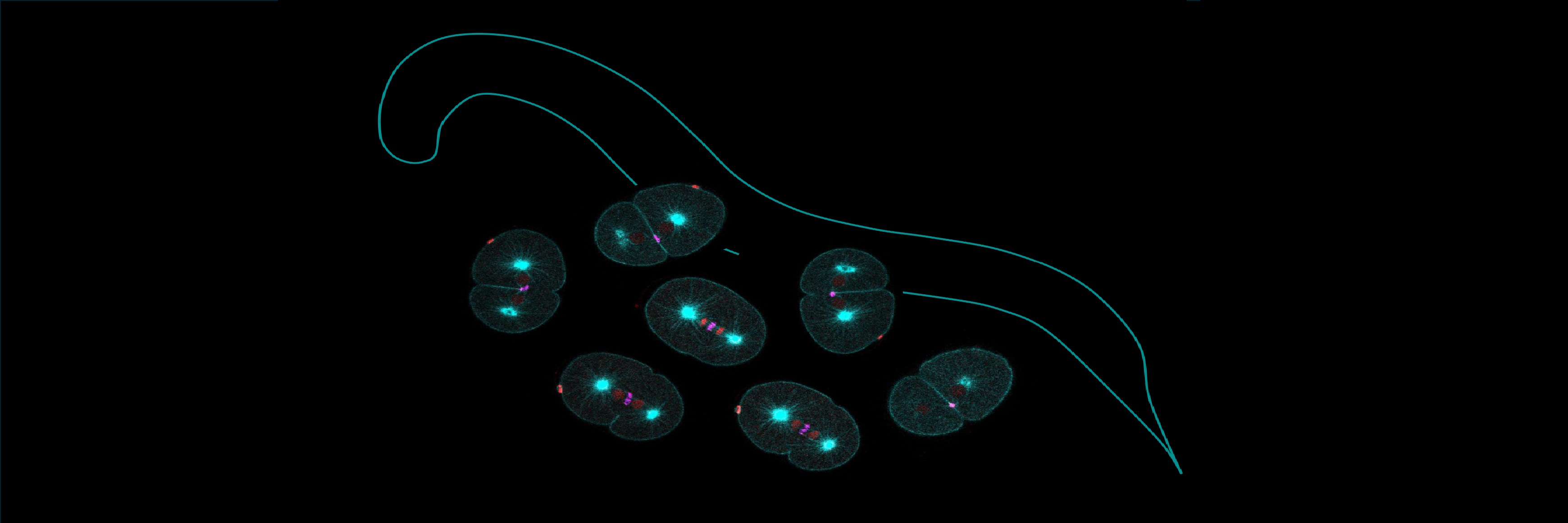Decoding cytokinesis

Cytokinesis represents the final stage of cell division during which a single mother cell separates into two daughter cells. This complex process begins in anaphase with the formation of an actomyosin-based cleavage furrow at the equatorial membrane and concludes with abscission, ensuring the accurate partitioning of cellular components into the daughter cells. In animal cells, the correct positioning of the cleavage furrow relies on the precise spatiotemporal accumulation of the small GTPase RhoA at the equatorial membrane. RhoA regulates actin dynamics and myosin II activity, thereby promoting cleavage furrow assembly. The RhoA-based contractile ring consistently forms and ingresses at the centre of the mitotic spindle. Protein complexes at the spindle midzone positively regulate RhoA accumulation at the equatorial membrane.
Interestingly, in many systems, including C. elegans embryos, the spindle midzone is located at a considerable distance from the equatorial membrane. This raises the question of how the timing and assembly of the contractile ring are regulated in such cells. The Gα/GPR-1/2/LIN-5 complex (Gα/LGN/NuMA in humans), known for its role in generating cortical pulling forces for spindle positioning, has also been suggested to contribute to cleavage furrow formation. However, these proteins are involved in multiple processes such as aster separation, spindle positioning, and the removal of myosin II from the polar region of cell membrane. So far, it has remained unclear whether they influence cleavage furrow formation directly or act indirectly through spindle-dependent mechanisms.
In a new study, researchers from the Department of Microbiology and Cell Biology (MCB), led by Sachin Kotak, demonstrate that the cortical accumulation of LIN-5, an evolutionarily conserved protein, regulates both the initiation and completion of cytokinesis independently of its established roles in spindle positioning, spindle elongation, and myosin II removal. Their findings provide new insights into the molecular mechanisms safeguarding faithful cytokinesis, a critical step for maintaining genomic integrity and supporting error-free development.
REFERENCE:
Adhikary K, Kapoor S, Kotak S, A cortical pool of LIN-5 (NuMA) controls cytokinetic furrow formation and cytokinesis completion, Journal of Cell Biology (2025).
LAB WEBSITE:
https://kotakcellbiology.wixsite.com/spindlebehaviour




